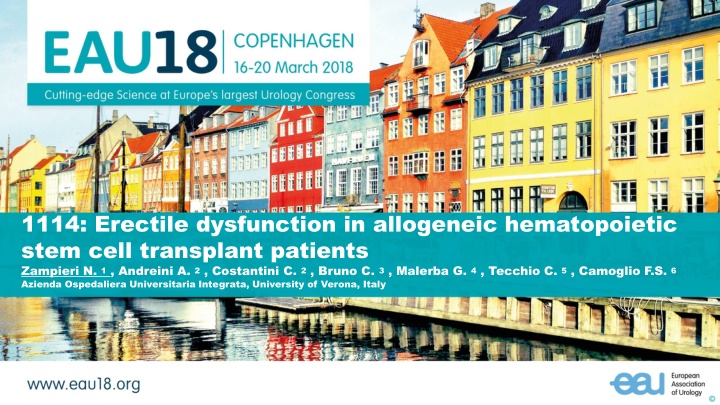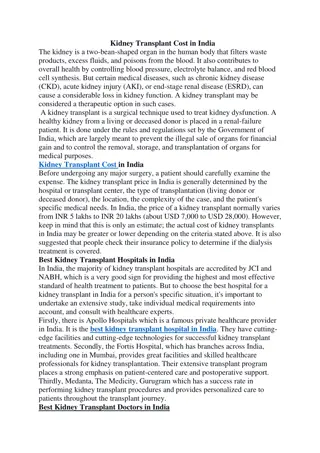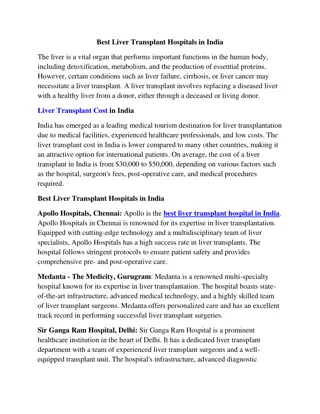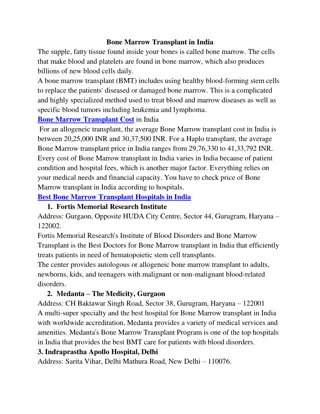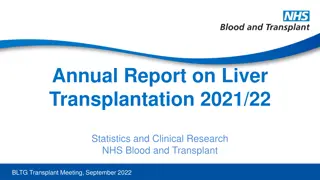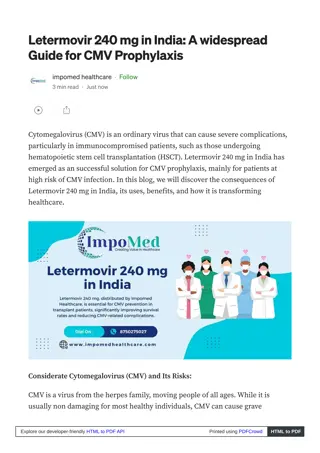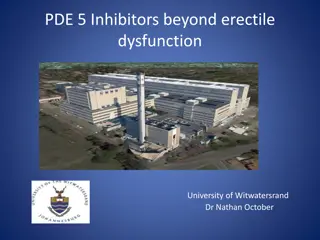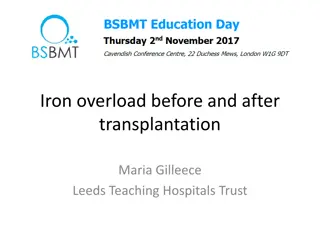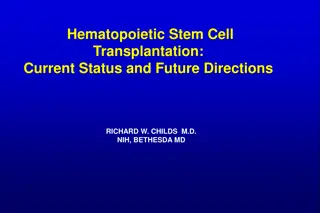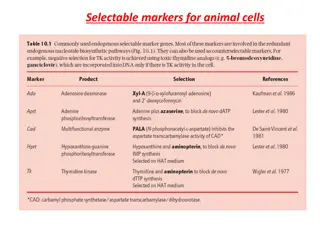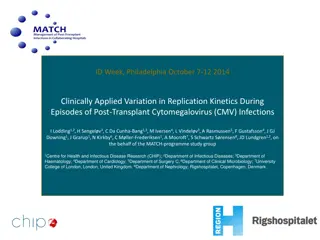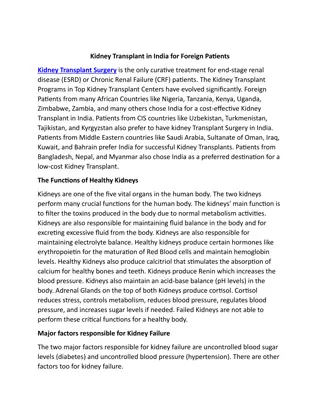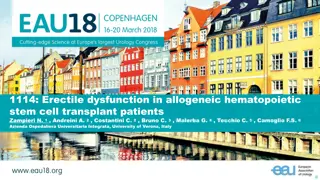Erectile Dysfunction in Allogeneic Hematopoietic Stem Cell Transplant Patients Study
Allogeneic hematopoietic stem cell transplantation (HSCT) patients may experience erectile dysfunction (ED) affecting their quality of life. This study investigates the prevalence, predictors, and impacts of ED in HSCT patients, highlighting the importance of addressing this complication for optimal patient care.
Download Presentation

Please find below an Image/Link to download the presentation.
The content on the website is provided AS IS for your information and personal use only. It may not be sold, licensed, or shared on other websites without obtaining consent from the author.If you encounter any issues during the download, it is possible that the publisher has removed the file from their server.
You are allowed to download the files provided on this website for personal or commercial use, subject to the condition that they are used lawfully. All files are the property of their respective owners.
The content on the website is provided AS IS for your information and personal use only. It may not be sold, licensed, or shared on other websites without obtaining consent from the author.
E N D
Presentation Transcript
1114: Erectile dysfunction in allogeneic hematopoietic stem cell transplant patients Zampieri N. 1, Andreini A. 2, Costantini C. 2, Bruno C. 3, Malerba G. 4, Tecchio C. 5, Camoglio F.S. 6 Azienda Ospedaliera Universitaria Integrata, University of Verona, Italy
Conflict of Interest Disclosure I have no potential conflict of interest to report
Background Allogeneic hematopoietic stem cell transplantation (HSCT) is a procedure with eventual life-threatening complications that in turn has the potential to cure a significant proportion of patients with otherwise fatal diseases; patients undergoing HSCT still remain exposed to a number of transplant-related morbidities. Among the latter chronic graft versus host disease (cGVHD), a multi-organ syndrome involving tissue inflammation and fibrosis2, may affect patient quality of life in several aspects, including sexual functioning. The aims of our study were to establish the prevalence and the extent of ED in a series of 55 consecutive HSCT patients treated in our Institution, and to identify possible predictors for ED within socio-demographic, medical and psychological domains Materials and methods Patients who underwent HSCT between 2003 and 2015 were asked to participate in the study upon written informed consent. Criteria of inclusion were: age 18 years, an interval of time from HSCT 6 months, a status of continuous disease remission, and a complete understanding of the written and spoken Italian language. Criteria of exclusion were: concurrent malignancy, major psychiatric disorder or mental retardation, and ongoing hormonal replacement. Presence and measure of ED were established at the time of the study by using the International Index of Erectile Dysfunction (IIEF15)8, a self-administered questionnaire also exploring orgasmic function, sexual desire, intercourse, and overall satisfaction. Patients received penile sonoelastography and uro-andrological evaluation and hormonal value (TT, FSH,LH, ACTH, ft3,ft4 and estradiol)
Results Fifty-two of the 55 patients who were asked to participate in the study returned the questionnaires (94.5% response- rate).medical characteristics were: acute leukemia, (22 myeloid, 10 lymphoblastic), non-Hodgkin lymphoma (7), myelodysplastic syndrome (4), chronic myeloproliferative disease (4), multiple myeloma (3), and B-cell chronic lymphocytic leukemia (2) Median time from HSCT to study assessments was 19 (6-108) months; 75% were affected by hypogonadism with a testicular volume 7 mm3, while 9 (17.3%) had testicular volumes at the lower normal limit. Varicocele was detected in 13/52 (25%) patients. Penile ultrasound and elastosonography revealed that 12 (23%) and 7 (13.5%) patients had medium-hard and hard penile elasticity, respectively. hormonal value confirmed hypogonadism for more than 75% of patients Overall 31/47 patients (66%) reported ED. The latter was severe in 13 (41.9%) patients, moderate in 7 (22.5%), moderate to mild in 2 (6.4%) and mild in 9 (29%). There was no difference between patients with and without ED in terms of median time from HSCT [25 (6-108) vs 15 (6-79) months, p=0.32]. As compared to unaffected patients, those with ED reported consistently lower IIEF15 scores in orgasmic function, sexual desire, intercourse and overall satisfaction domains Conclusions In univariate analysis older age and low education level confirms that ED is a frequent complication of HSCT as it affected 66% of our patients resulted significantly associated to ED This report
